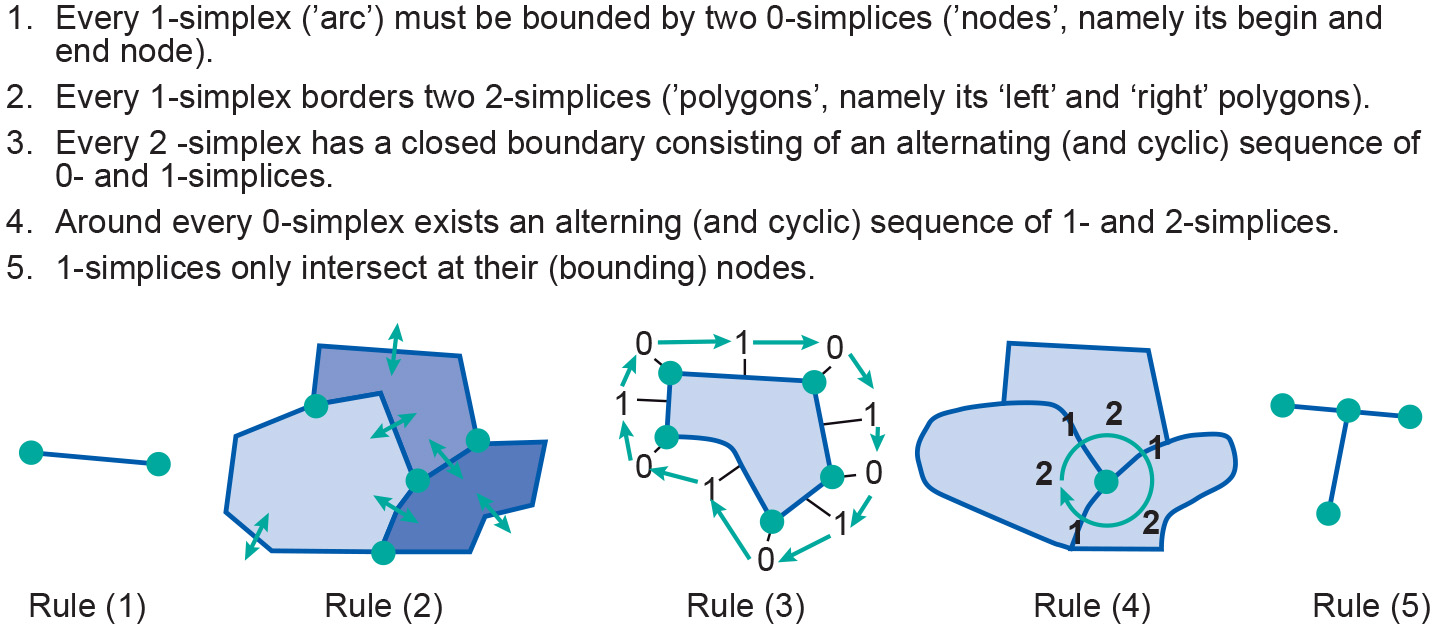Topological Consistency
Introduction
Rules of how simplices and simplicial complexes can be embedded in 2D and 3D space are quite different. Such a set of rules defines the topological consistency of that space. It can be proven that if the rules presented and illustrated in the Figure below are satisfied for all features in 2D space, then the features define a topologically consistent configuration in 2D space.

This also plays an important rule during Data Checks and Repairs during Data Preparation.
Topological Consistency in 3D
Our discussion of vector representations and spatial topology has so far focused on objects in 2D space. The history of spatial data handling is almost purely 2D, and this is remains the case for the majority of present-day GIS applications. Many application domains make use of elevational data, but these are usually accommodated for by what are known as 2.5D data structures. These 2.5D data structures are similar to the 2D data structures just discussed, using points, lines and areas. They also apply the rules of two-dimensional topology, as illustrated in the Figure above. This means that different lines cannot cross without intersecting nodes and that different areas cannot overlap. There is, however, one important aspect in which 2.5D data do differ from standard 2D data and that is in their association of an additional z-value with each 0-simplex (‘node’). Thus, nodes also have an elevation value associated with them. Essentially, this allows the GIS user to represent 1- and 2-simplices that are non-horizontal, so that a piece-wise planar, “wrinkled surface” can be constructed as well, much like a TIN. One cannot have two different nodes with identical x and y coordinates but different z values. Such nodes would constitute a perfectly vertical feature, which is not allowed. Consequently, true solids cannot be represented in a 2.5D GIS.
Learning outcomes
-
3 - Spatial data modelling: topology
The student is able to describe and explain the concept of topology (level 1 and 2).
Prior knowledge
Outgoing relations
- Topological Consistency is used by Data Quality
- Topological Consistency is used by Vector Representation
Incoming relations
- Topology is used by Topological Consistency